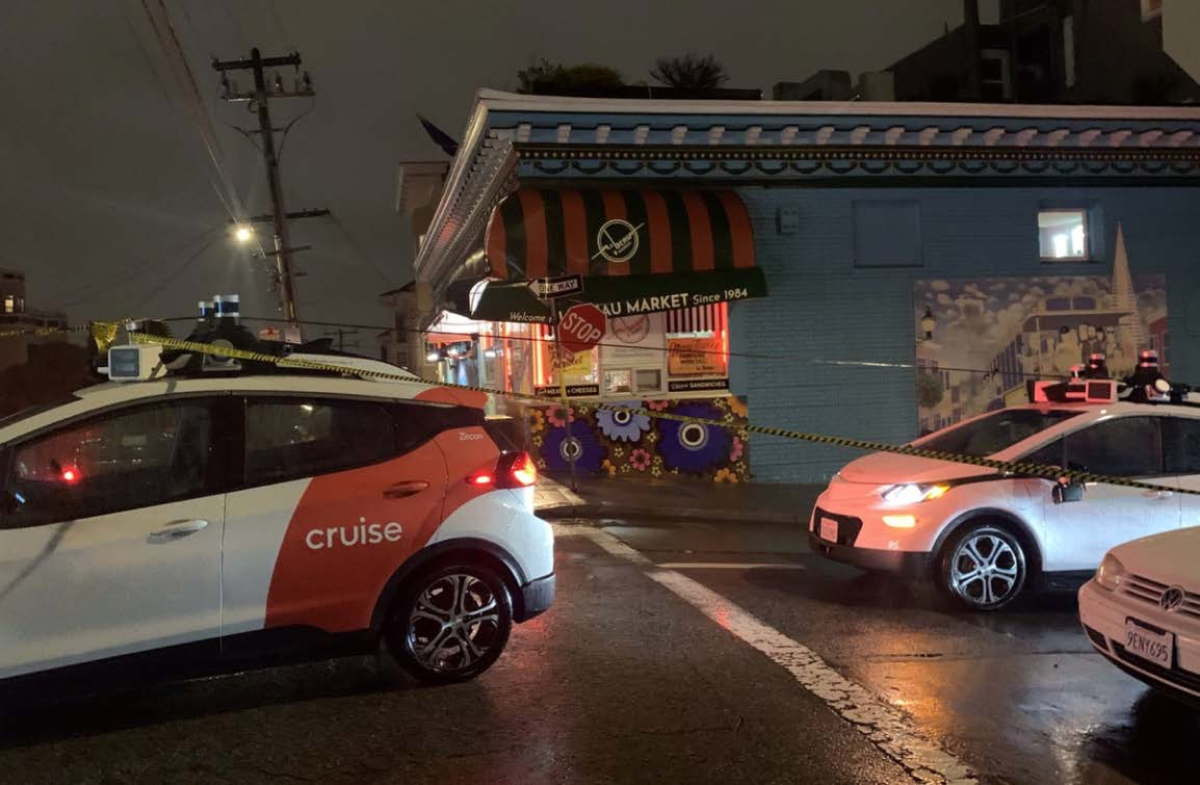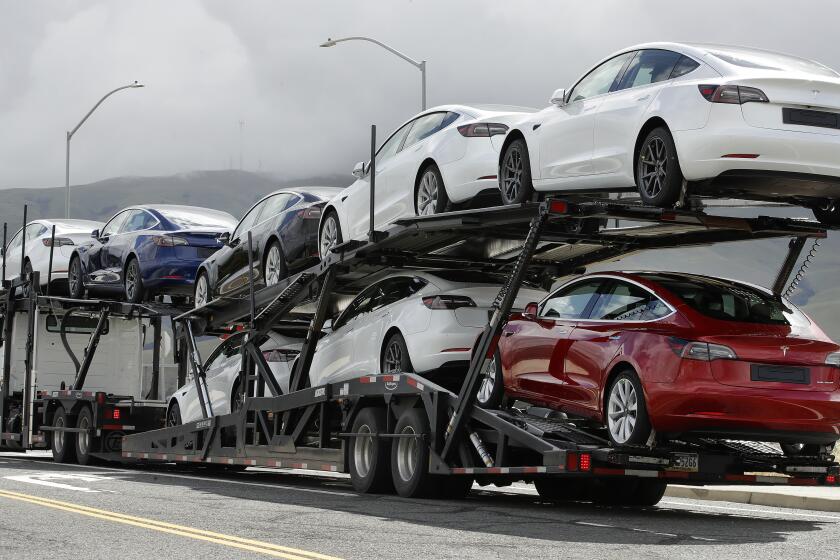Editorial: Slow the roll of robotaxis. They aren’t safe enough yet to take over California’s streets

- Share via
Self-driving cars may be the future, but right now they’re still a work in progress.
Just look at San Francisco, where two companies, Waymo and Cruise, have been operating a limited number of robotaxis in designated areas. Since last fall, city officials have documented frightening incidents, such as when a driverless vehicle rolled into an active fire scene and parked with one tire on a fire hose. Another time, a vehicle drove through yellow emergency tape and past warning signs into a street with storm-damaged electrical wires.
Robotaxis have stopped on light-rail lines, blocked fire station driveways and halted traffic. With no driver present, authorities have to contact the companies to get the vehicles moved. Some 93 traffic incidents were reported in March — and those are just what was documented. Companies aren’t required to report when the vehicles stop in the middle of the road, block traffic or drive in bus-only lanes.
Despite protests from emergency personnel and city officials, the California Public Utilities Commission has indicated in filings that it intends to let Waymo and Cruise expand service with an unlimited number of driverless taxis collecting fares throughout San Francisco 24 hours a day, seven days a week, Times writer Russ Mitchell reported.
Tesla calls its technology ‘Full Self-Driving,’ but California is not regulating it like other autonomous vehicles being tested on public roads.
With CPUC approval, driverless taxis will no longer be an experiment. They’ll be a business in San Francisco. Santa Monica and Westside neighborhoods in Los Angeles, where companies have state permission to test the technology, are likely to be the next expansion.
Why are California regulators giving robotaxi companies a free pass to operate glitchy technology on public streets? Even the CPUC acknowledges in its filings that there are serious operational concerns with driverless taxis and the lack of reporting requirements make it difficult to evaluate potential safety issues.
But because of California’s bifurcated system of regulating autonomous vehicles, the CPUC suggests it has limited power to slow the robotaxi expansion to address traffic safety concerns or to impose reporting requirements. The CPUC regulates commercial passenger service, such as buses and limos, and is focused on the safety of riders inside the robotaxi. Broader safety issues are the responsibility of the Department of Motor Vehicles, which permits autonomous vehicles to operate on public roads. But the DMV has come under fire from lawmakers who think the agency is too lax in regulating autonomous vehicles.
Cities, too, are deeply concerned because they have no control over robotaxi operations, even if they pose problems for cars, bicyclists and pedestrians on local streets. While companies have voluntarily shared some information about their operating plans with cities, including in Los Angeles and Santa Monica, where companies are testing driverless vehicles that are eventually intended to ferry paying passengers, there is no requirement to divulge where, when and how many robotaxis will be deployed.
That’s information that human-driven taxis are typically required to give cities. In Los Angeles, taxis are equipped with technology that allows real-time communication with the city’s street management system, so drivers can access important information about road closures, emergencies and safety issues. L.A. wants to be able to do the same with robotaxis. But so far, state regulators have shown little interest in helping cities manage the arrival of robotaxis. That’s a shame.
The CPUC was expected to approve the Cruise and Waymo expansion in San Francisco this month but has postponed its decision to July. We hope the delay signals that the CPUC is rethinking its approach and will assert more authority in slowing the rollout of robotaxis.
There is great promise for driverless vehicles that can avoid human distractions and errors. But what’s on the ground today is not ready for prime time. New technology calls for reasonable, responsible collaboration and compromise. The CPUC should demand an incremental expansion that ensures robotaxi companies work with local communities on safety and operational concerns. California can have innovation and safety.
More to Read
A cure for the common opinion
Get thought-provoking perspectives with our weekly newsletter.
You may occasionally receive promotional content from the Los Angeles Times.











